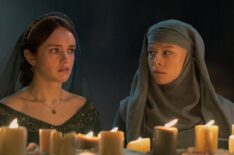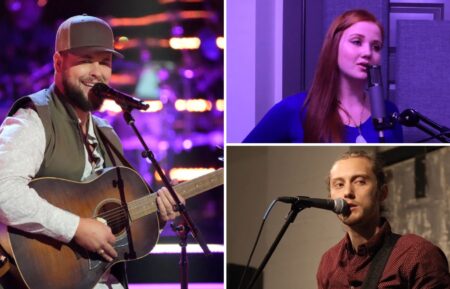‘House of the Dragon’ Director Breaks Down Rhaenyra & Alicent’s Secret Meetings in Season 2
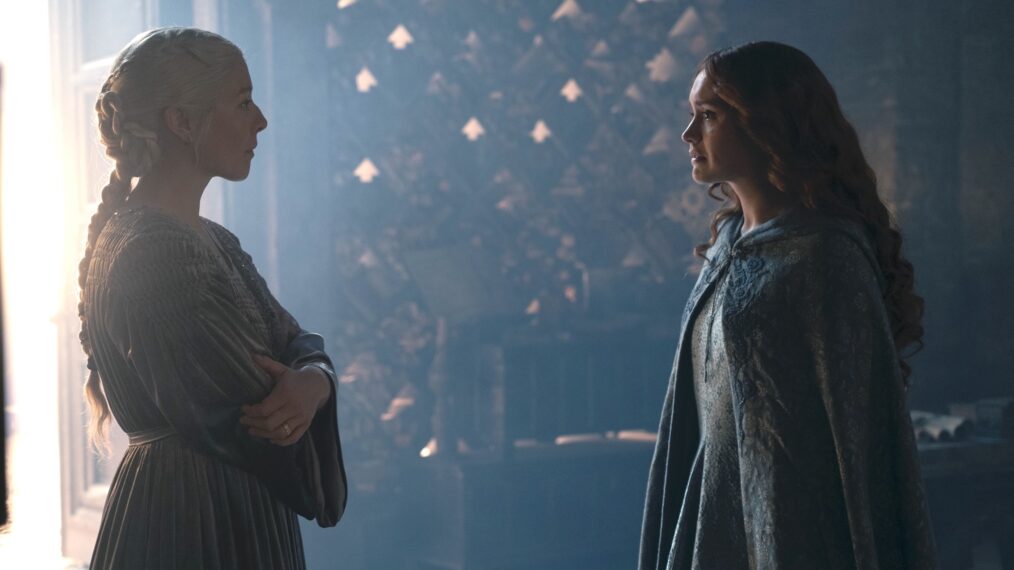
[Warning: The following contains MAJOR spoilers for the House of the Dragon Season 2 finale, “The Queen Who Ever Was.”]
George R.R. Martin’s Fire & Blood is filled with epic battles, but only one of them was seen in House of the Dragon‘s second season, which came as a shock to viewers. The Season 2 finale ended with the stage being set for the next conflict, the Battle of the Gullet, and even though showrunner Ryan Condal promises that this deadly showdown will take place “early” in House of the Dragon Season 3, fans are still disappointed by what they feel is a lack of meat in Season 2’s plot.
Geeta Vasant Patel, the director of the House of the Dragon Season 2 finale, tells TV Insider that the finale didn’t go to war because this season was focused on Rhaenyra (Emma D’Arcy) and Alicent (Olivia Cooke). Condal and writer/executive producer Sara Hess’ decision to save the Battle of the Gullet for Season 3 was “brave,” according to Patel. But she knew when she got the finale script that bringing this story to life was a “tall order.”
The season ends with four shots of Rhaenyra and Alicent — two shot in profile and made to look like the queens were looking at each other, and two symbolizing where their actions have led them. Rhaenyra’s final shot comes first, showing her surrounded by scrolls containing decades of Targaryen history, and then the season ends with Alicent looking out on the horizon at Dragonstone surrounded by the open air. Bringing Rhaenyra and Alicent’s storylines to a satisfying emotional climax was the main goal of Patel’s directing in this episode (Patel also directed Season 2 Episode 3 — the episode with Rhaenyra and Alicent’s first secret meeting — as well as Season 1 Episode 8).
“When I got the script, obviously those shots weren’t scripted. I had to figure out how to interpret the script and design the last shots, and it was a tall order because I knew that some people might be expecting a big war, the escalation of Episode 7,” Patel explains. “And yet Ryan Condal and Sara Hess had taken such a brave route in making this about two people and about the dramaturgy and going back to the root of storytelling and not giving in to something that maybe would’ve just been easy as a season finale.”
“They took the very difficult and yet artful route,” she continues, “so I felt like we needed to find something that would make people feel, and that’s really our job as directors. I think the season finale needed to make us feel, and that’s universal to whether it’s an action sequence or it’s a dramatic conversation that feels like an action sequence, something that you come away with kind of throttled a bit.”
Rhaenyra and Alicent’s final scene was all about shifting the burden of leadership from Alicent to Rhaenyra. In Season 1, we saw Alicent take the reins and place Aegon (Tom Glynn-Carney) on the Iron Throne out of her misinterpretation of Viserys’ (Paddy Considine) final words. Alicent assumed her work would continue with Aegon on the throne, but Aemond’s (Ewan Mitchell) rise to Prince Regent took away any ounce of political power she had left. Alicent took control of the board at the end of Season 1, and Rhaenyra spent most of Season 2 trying to take it over herself while avoiding bloodshed. She succeeded in wresting control of the board, but the cost of keeping it will be paid in blood.
“As I listened to Ryan and Sara talk about the end of the episode, they really wanted the burden from Alicent to now be on Rhaenyra’s shoulders. That was the design that they had coming up to that moment,” Patel says. “It obviously was an earned moment. That scene was not going to work in isolation. It was about all the work that came before it, so as I thought about the transfer of burden, I started feeling like, OK, if I was Rhaenyra, I’m caught in this spiderweb. There’s nothing I can do. I’ve tried every way out and nothing has worked. I was sitting in the library when we were shooting one day, and I saw the scrolls and I just kept thinking, OK, well, I can’t introduce a spiderweb because literally there’s no theme that we would connect it to — because we’re always trying to repeat themes — but then the scrolls might create a spiderweb.”
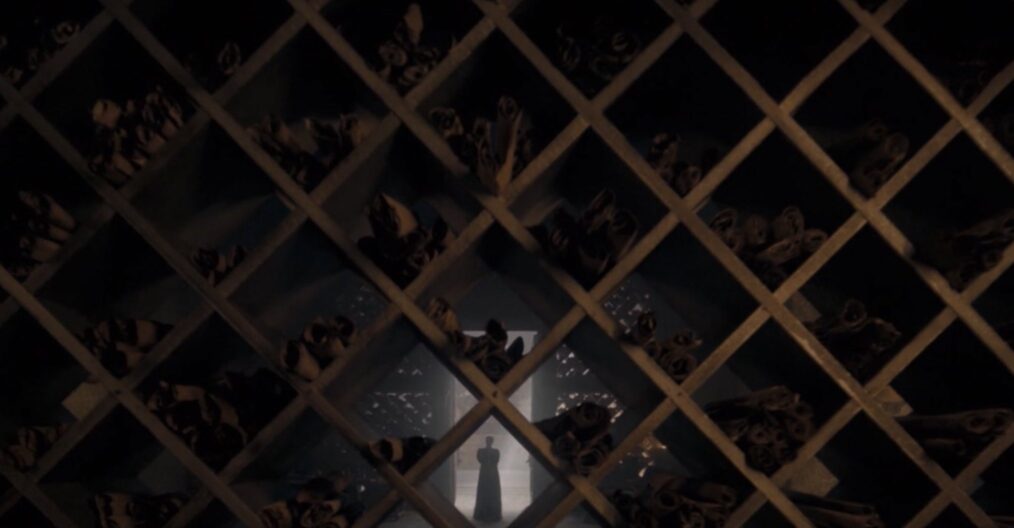
HBO
The design for those final shoots “took all season” for Patel to figure out. “I had so many ideas, and none of them felt like they were the right thing,” she reveals. Once they figured out that Alicent’s final shot would close the season, and once they figured out how to get it filmed, they had just seconds to get the perfect shot.
“Our backs were against a mountain and Alicent wasn’t quite small enough, and also the sun was moving, and you only have one shot. It’s not like you can do multiple takes, and you only have two seconds. So everything had to be lined up and Olivia’s out there. We got it, and everybody was up cheering,” she says.
Visual effects helped complete the last two shots, which Patel hopes evoked emotion in viewers. The shots are up for interpretation. For Patel, they were about Rhaenyra being trapped in this war and Alicent breaking free, but also that they’ll each be defined by this thing that’s much bigger than them. The characters being so small in the shots is meant to be like “David and Goliath,” Patel explains. They “wanted [the shots] to contrast so that you feel the relationship between these two protagonists and these sisters, these lovers in a way.”
Patel says that Rhaenyra and Alicent’s dynamic is “absolutely” the love story at the center of House of the Dragon. “Come with me,” Alicent begged Rhaenyra in their last secret meeting. Rhaenyra admitted she wanted to go, but the call to duty was too great. Another way to interpret their final shots is that Rhaenyra is shrouded in history, almost being crushed beneath the weight of it, and Alicent is left with nothing and without the person she wants with her most.
Alicent’s “David and Goliath moment,” Patel says, shows “all this open space. What are you going to do with it? Are you going to be comfortable? It’s like the girl who has to keep dating people, like can’t be single. Is she going to be able to handle the space? Can you live without Rhaenyra? Can you live without just being in people’s shadows and doing what they say? Can you be alone with your voice?”
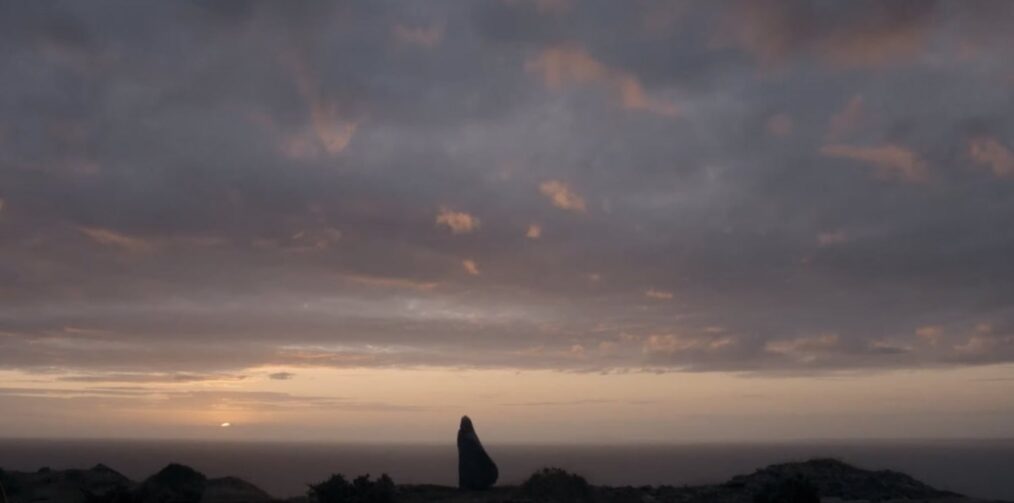
HBO
D’Arcy and Cooke had a rehearsal for their final scene, but Patel says they didn’t need much directing at all. “I think a good director stays out of their way,” she says. Her job in that rehearsal was to watch what the actors brought out of each other and figure out the framing that would highlight it best.
“The one thing I did focus on as a team is, where’s the turning point? That shift is when Alicent says, ‘I will give you my son.’ For me, it was really important that that was not a light moment. That was not an easy moment for all of us,” Patel explains. “Even if Aegon is doing the worst things possible, Alicent is giving up her son. It’s that simple. It is a huge sacrifice. And so we talked about how that moment needed to be not just earned through all the scenes before it, but in that scene, we needed to feel that.”
“There were a few things I noticed when they rehearsed the scene,” Patel explains, noting that Condal and Hess were there for the rehearsal as well. “We realized that the silence between them, there was a placement of that silence that felt so chilling. And so we decided to keep that silence. When we shot it, there was a moment where there’s an answer that needs to come, and we took our time with it, and it all came from [D’Arcy and Cooke]. They try different things and we see what feels like it’s the most powerful, and then on the day of shooting, it’s really just all them. Catherine Goldschmidt, the cinematographer, and I will move cameras when we think there’s a shift happening that we could underscore. Sometimes we go in close, like when Rhaenyra says, ‘You need to sacrifice something, you need to do something.'”
Patel says that this line calls back to what Condal wrote in the Season 2 premiere. “He wrote that duty is sacrifice. And so here we are at the end of the season, and duty is sacrifice,” the director notes. “We needed to make sure that was ringing. So we went in close for those moments. We stayed there in those moments. The craft is to not step in when you don’t need to step in. Cinematically, I try to just dance with them.”
There was a major shift in tone between Rhaenyra and Alicent’s two scenes together this season. The first, which ended Episode 3, saw Rhaenyra discover Alicent was wrong about Viserys’ last words. This first scene, with its lighting that mimicked the first Rhaenyra and Alicent sept scene from Season 1 Episode 2, was meant to make you think that these two could come back together because of the “deja vu” it invoked. “It’s so beautiful, how could it go wrong?” Patel teases. But of course, it does go very wrong. Alicent digs her heels in further to her plan because correcting her mistake is too daunting of a task. But this comes full circle in the finale, when Alicent changes course and begs Rhaenyra to do what she must to end the war even if that means killing her son.

HBO
The one through-line between the secret meetings of Season 2, according to Patel, is how Rhaenyra and Alicent revert to their childlike selves when they’re together. Rhaenyra and Alicent’s love for each other is perhaps deeper and more “primal” than any other bond in their lives.
“As soon as they see each other and start talking, they speak in this ugly face and they cut each other off and they become animals. That’s childlike, that’s juvenile,” Patel explains. “And yet all the scenes I had in both those episodes with them, they were presidential, they were thoughtful, they were plotting at times, but only with each other did they have that behavior and that we can all relate to. We can relate to the fact that when you’re with your sister, your brother, your mother, your father, it’s like, ‘Stop talking to me like that!’ ‘No!’ ‘Go ahead!’ There’s this primal way that you allow yourself to interact, and I thought the two of them did that so beautifully.”
D’Arcy and Cooke brought back anxious mannerisms established by their younger counterparts, Milly Alcock and Emily Carey. “You’ll notice in Episode 8, Olivia started biting her nails,” Patel points out. “And you’ll notice that Emma, the way that [Rhaenyra’s] mouth moved, her lip curled. There were things that were just Rhaenyra as a child.”
Patel says that the key to Season 2 was trusting in the strength of the protagonists. “Ryan and Sara have done a great job at making sure that this season feels like a film and that we have protagonists that we are following throughout,” Patel says, “and I think Ryan did a great job of trusting that even though we don’t see Rhaenyra and Alicent together very much this season, these two moments are enough.”
House of the Dragon, Seasons 1 & 2 Available Now, Max

